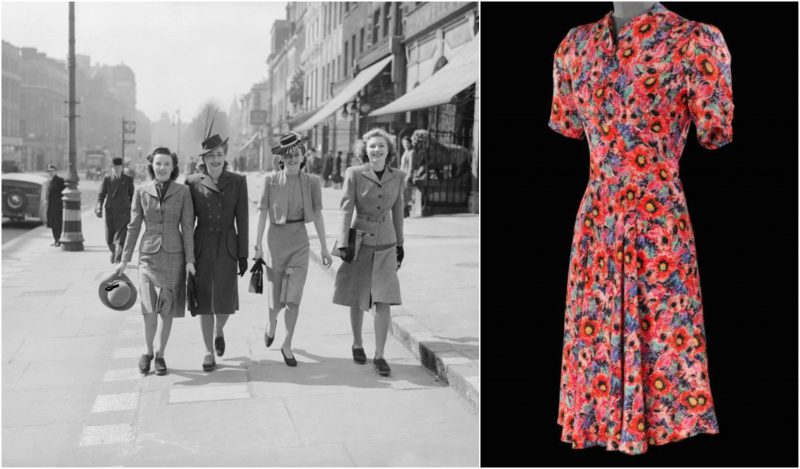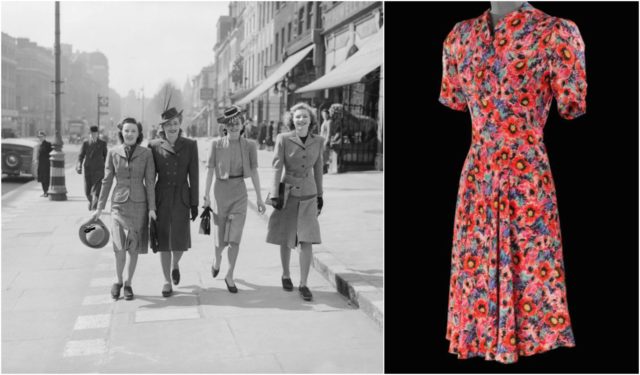
You have surely seen photos of girls drawing on lines for fake stockings, photos that offer a glimpse in the time when clothes rationing was necessary. To mark the 70th anniversary of the Second World War, last year The Imperial War Museum held an exhibition, entitled Fashion on the Ration: 1940s Street Style displaying surviving examples of wardrobe from 1940s.

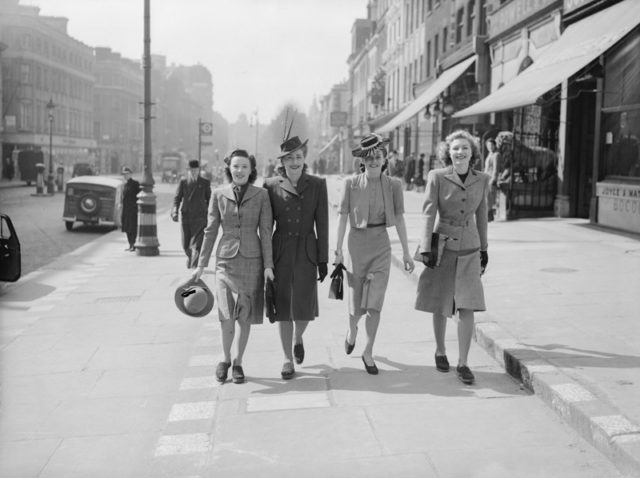
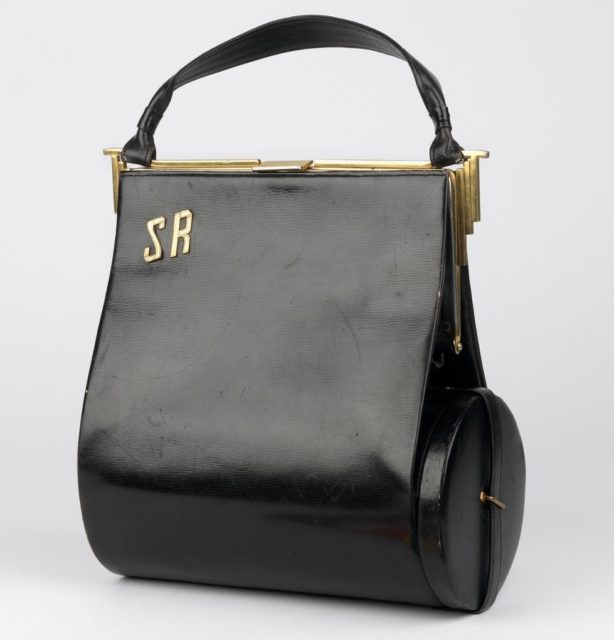
Wartime austerity led to restrictions on the number of new clothes that people bought and the amount of fabric that clothing manufacturers could use. Women working on war service adopted trousers as a practical necessity. The United States government requisitioned all silk supplies, forcing the hosiery industry to completely switch to nylon. In March 1942 the government then requisitioned all nylon for parachutes and other war uses, leaving only the unpopular cotton and rayon stockings. The industry feared that not wearing stockings would become a fad, and advised stores to increase hosiery advertising. When nylon stockings reappeared in the shops there were “nylon riots” as customers fought over the first deliveries.
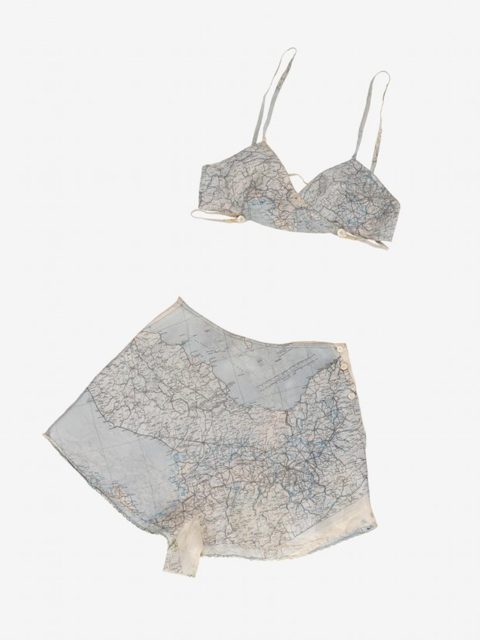
In Britain, clothing was strictly rationed, with a system of “points”, and the Board of Trade issued regulations for “Utility Clothes” in 1941.In America the War Production Board issued its Regulation L85 on March 8, 1942, specifying restrictions for every item of women’s clothing. Because the military used so much green and brown dye, manufacturers used more red dye in clothing. Easily laddered stockings were a particular concern in Britain; women were forced to either paint them on (including the back seam) or to join the WRNS, who continued to issue them, in a cunning aid to recruitment. Later in the war, American soldiers became a source of the new nylon stockings.
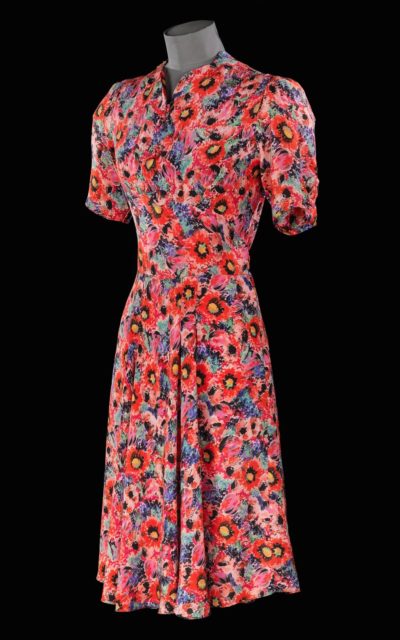
Most women wore skirts at or near knee-length, with simply-cut blouses or shirts and square-shouldered jackets. Popular magazines and pattern companies advised women on how to remake men’s suits into smart outfits, since the men were in uniform and the cloth would otherwise sit unused. Eisenhower jackets became popular in this period. Influenced by the military, these jackets were bloused at the chest and fitted at the waist with a belt. The combination of neat blouses and sensibly tailored suits became the distinctive attire of the working woman, college girl, and young society matron
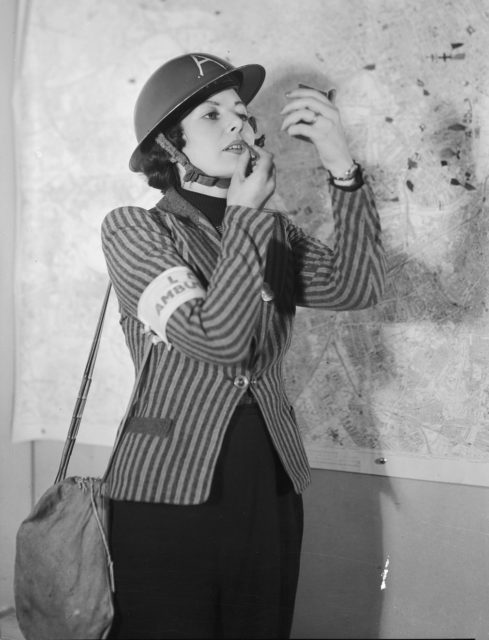
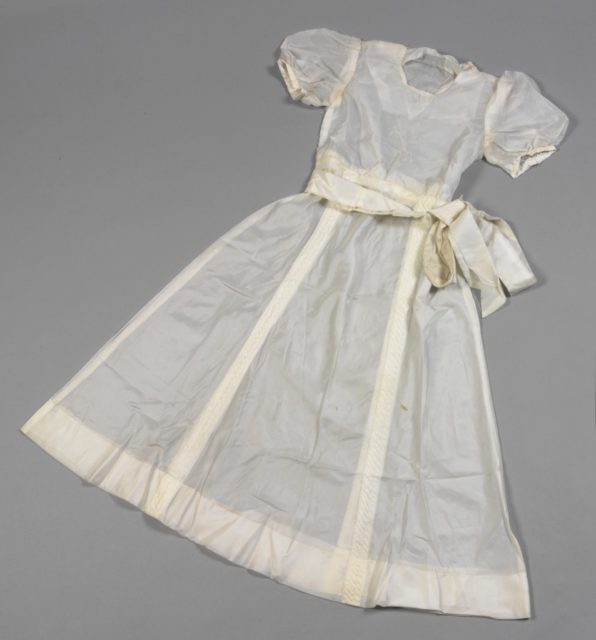
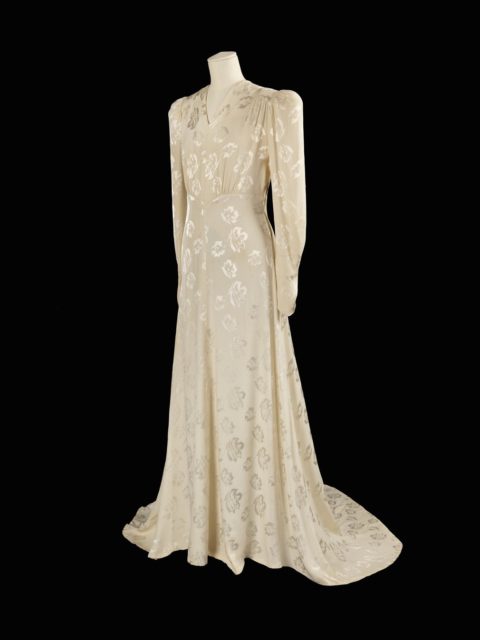
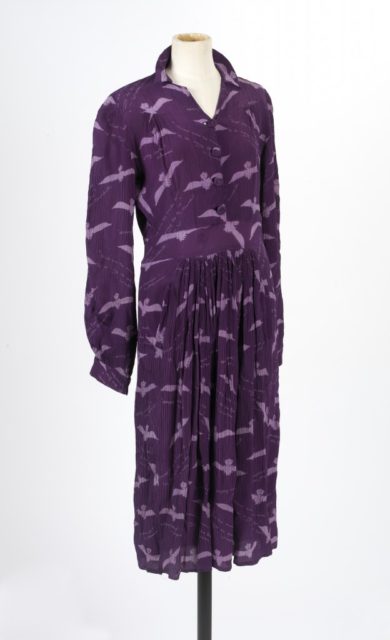
Because of the war, current European fashion was no longer available to women in the United States. In 1941, hatmakers failed to popularize Chinese and American Indian-based designs, causing one milliner to lament “How different when Paris was the fountainhead of style”. As with hosiery hatmakers feared that bareheadness would become popular, and introduced new designs such as “Winged Victory Turbans” and “Commando Caps” in “Victory Gold”.American designers, who were often overlooked, became more popular as American women began to wear their designs. American designers of ready-to-wear contributed in other ways too. They made improvements to sizing standards and began to use fiber content and care labels in clothing
All photos by: Imperial war museum
